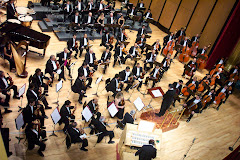
Like the cat that got the cream, I'm-all-right-Jack, early nineties physicists were feeling pretty self-approving.
They believed they had the universe taped.
Quantum theory and relativity later made them understand that far from knowing everything, they knew almost nothing.
Embarking on these theories and radio telescopes, National Geographic has been taking us a down the memory lane and blending it with the latest seasoned insights that astronomers are making.
An absolutely magnificent painting of the cosmos by NGC, the prime channel has emphatically reflected how physicists have discovered many of the fundamental particles of which the universe is made, the forces that hold them together, and how those particles and forces interact to produce a bestiary of other objects—atomic nuclei and galaxies included—that were unknown in 1900.
The next decade seems to cross-fertilize different theories of space, some extremely strange by everyday standards, and not all of them easily testable. Physics is not undertaken in the hope of tangible benefit. It is done to answer the question “Why?” In some ways, therefore, it resembles a branch of theology.
If be it so, it's temples are telescopes and particle accelerators, Newton, Planck and Einstein would be the high priests and our NGC would hopefully be the best evangelist.
Wonders of Universe --- Outstanding program!
Can we hope to see from this science torch-bearer an excellent series on dinosaurs in the near future ?
Embarking on these theories and radio telescopes, National Geographic has been taking us a down the memory lane and blending it with the latest seasoned insights that astronomers are making.
An absolutely magnificent painting of the cosmos by NGC, the prime channel has emphatically reflected how physicists have discovered many of the fundamental particles of which the universe is made, the forces that hold them together, and how those particles and forces interact to produce a bestiary of other objects—atomic nuclei and galaxies included—that were unknown in 1900.
The next decade seems to cross-fertilize different theories of space, some extremely strange by everyday standards, and not all of them easily testable. Physics is not undertaken in the hope of tangible benefit. It is done to answer the question “Why?” In some ways, therefore, it resembles a branch of theology.
If be it so, it's temples are telescopes and particle accelerators, Newton, Planck and Einstein would be the high priests and our NGC would hopefully be the best evangelist.
Wonders of Universe --- Outstanding program!
Can we hope to see from this science torch-bearer an excellent series on dinosaurs in the near future ?
*******************************************************






No comments:
Post a Comment